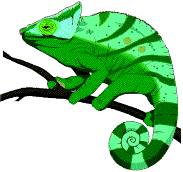
Evolution
of the Galapagos Islands
Unit Topic: The Galapagos Islands
Grade Level: Middle School
Basic Concepts: Evolution, Adaptation, Research
Content Areas: Science, Social Studies
Time: 1 1/2 hour ("Darwin Day")
Objectives
Activity 1
Phase 1: For the first part of this activity, the class will gather outside in a grassy area. Ask the students to remove their shoes so that they are in their socks. (Bare feet will also work, although not as well.) Ask the students to walk around on the grass for about 5 minutes. Then have the students sit down in a large circle. Students should inspect their socks. What kind of things do they see? How might it have gotten there? Was the object a natural part of the grass or did it originate elsewhere? As a final question, ask "What does this activity have to do with the Galapagos Islands?"
Materials: grassy area, socks
Phase 2: After returning to the classroom, gather again as a large group. The teacher should lead into a discussion about the colonization of the Galapagos Islands. Specifically focus on how the evolutionary process, climate, ocean currents, and comparative lack of predatory enemies "colonized" the Galapagos. The teacher should ask the students how these four things influenced the population (both animal life and vegetation) of the Galapagos Islands. Refer to the sock analogy. [Note: The sock experiment shows how seeds are dispersed from one area to another.] Ask the students again how the sock experiment relates to the Galapagos.
This would be a good time to use visual aides. Refer to the following lithograph of The World's Main Ocean Currents, Diagram of Ocean Currents, and Global Sea Surface Temperature. Use other visuals as you see fit.
Materials: lithograph, diagram, other visuals
Phase 3: The students will then watch two segments from the video Darwin Beyond Galapagos, "Bird's Eye View" and "On the Shoulders of Giants." Together the segments run about 19 minutes.
Materials: video
Phase 4: Students will gather in their literature circle groups. Were any of the four factors of colonization (evolutionary process, climate, ocean currents, and comparative lack of predatory enemies) evident in their novel? How? How did the characters react? If the factors were not evident, imagine that one of them was altered. For example, an island with no predatory species suddenly had an influx of tigers. How would it have changed the novel? How would the characters react?
Materials: literature circle novels
Phase 5: Students will respond to the activities in their journals.
Materials: journals
Assessment: Students will be assessed as to their participation and cooperation. See the following rubric.
Extensions:
1. Students may wish to study how specific animals, Darwin's finch, for example, evolved.
2. Students may wish to further research Darwin's theory of evolution. Many resources can be found in libraries or on the Internet.
3. Students may wish to interview biology students at the high school or college level who have studied evolution.
Resources:
Video: *Clark, D. & Giddings, A. (Producers and Directors). (1996). Galapagos Beyond Darwin [Film]. Available from Discovery Channel Video.
Lithograph: National Aeronautics and Space Administration. "Global Sea Surface Temperature." HqL-324.
Diagram: *Bramwell, M. (1987). The Oceans. London: Franklin Watts. [0-531-10356-0]
Diagram: *Zeman, A. & Kelly, K. (1994). Everything You Need to Know About Science Homework. New York: Scholastic Reference. [0-590-49357-4]
Other Suggested Resources (*denotes "youth-friendly"):
*Casey, D. (ed.) (1995, September/October). Art to Zoo: Tomorrow's Forecast: Oceans and Weather. Washington, DC: Smithsonian Institution Office of Elementary and Secondary Education.
Explores the topic of oceans and weather. Brief explanation of topic. Four integrated lesson plans.
*Charles Darwin Research Station. (2-20-98). Charles Darwin Research Station. [On-line]. Available Internet: www.polaris.net/~jpinson/welcome.html.
Info about islands, issues affecting the Galapagos, what it's like to work at the Station, scientific reports, and conservation. Many (but not all) of the sites within the page are youth-friendly.
*Cole, J. (1992). The Magic School Bus on the Ocean Floor. New York: Scholastic Inc. [0-590-41431-3]
Mrs. Frizzle and her class take a trip to the ocean bottom, stopping on the way to explore the mysteries of the deep.